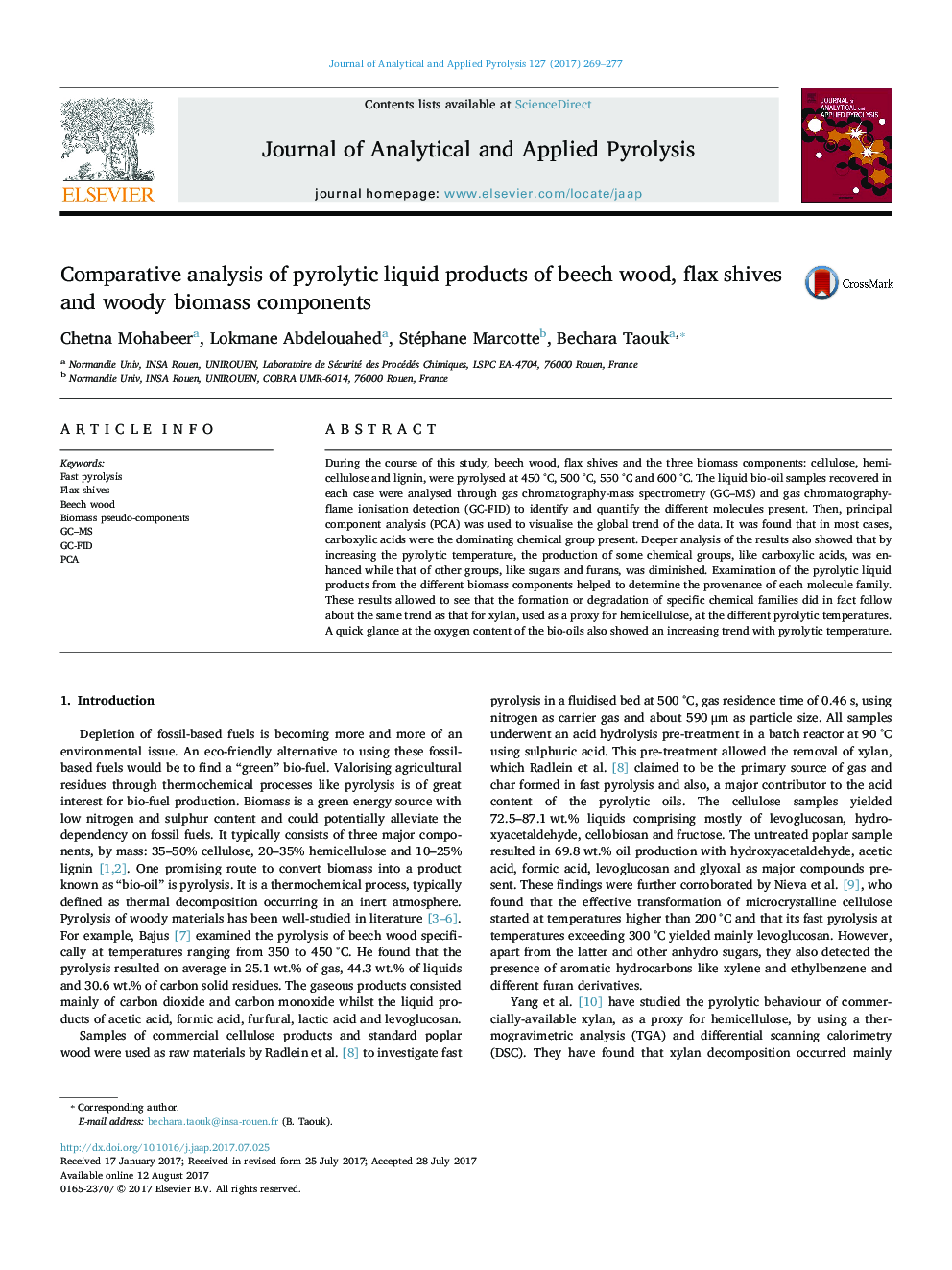| Article ID | Journal | Published Year | Pages | File Type |
|---|---|---|---|---|
| 5134442 | Journal of Analytical and Applied Pyrolysis | 2017 | 9 Pages |
â¢Comparative analysis of pyrolytic behaviour of flax shives, beech wood and biomass constituents.â¢Identification and quantification of compounds present in bio-oil.â¢Evolution of liquid pyrolytic product composition with temperature.â¢Principal component analysis (PCA) for correlation analysis of bio-oil components.â¢Identification of model compounds for each chemical family present in bio-oil.
During the course of this study, beech wood, flax shives and the three biomass components: cellulose, hemicellulose and lignin, were pyrolysed at 450 °C, 500 °C, 550 °C and 600 °C. The liquid bio-oil samples recovered in each case were analysed through gas chromatography-mass spectrometry (GC-MS) and gas chromatography-flame ionisation detection (GC-FID) to identify and quantify the different molecules present. Then, principal component analysis (PCA) was used to visualise the global trend of the data. It was found that in most cases, carboxylic acids were the dominating chemical group present. Deeper analysis of the results also showed that by increasing the pyrolytic temperature, the production of some chemical groups, like carboxylic acids, was enhanced while that of other groups, like sugars and furans, was diminished. Examination of the pyrolytic liquid products from the different biomass components helped to determine the provenance of each molecule family. These results allowed to see that the formation or degradation of specific chemical families did in fact follow about the same trend as that for xylan, used as a proxy for hemicellulose, at the different pyrolytic temperatures. A quick glance at the oxygen content of the bio-oils also showed an increasing trend with pyrolytic temperature.
